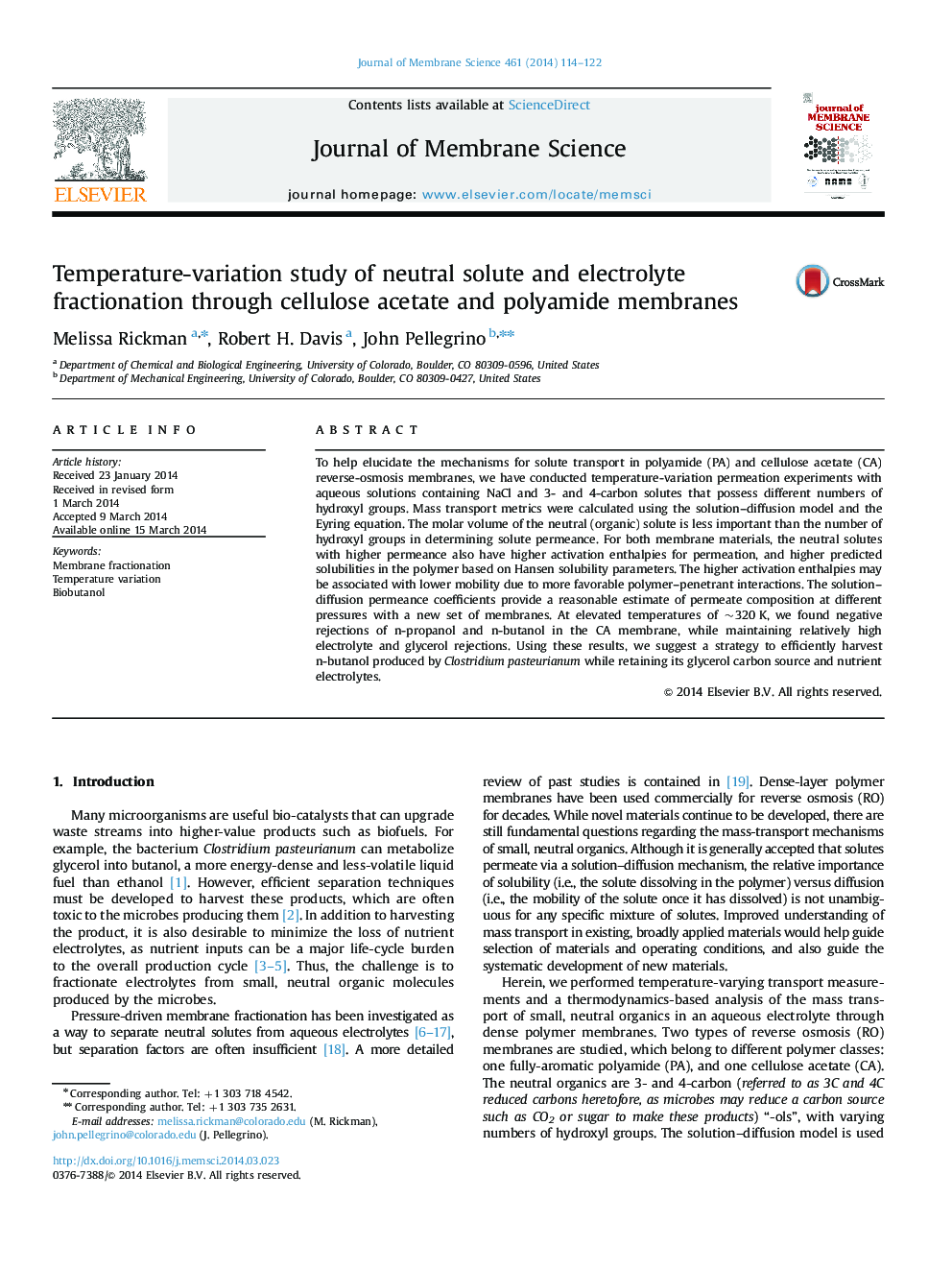| Article ID | Journal | Published Year | Pages | File Type |
|---|---|---|---|---|
| 633561 | Journal of Membrane Science | 2014 | 9 Pages |
•Higher ΔH may be associated with more favorable polymer–penetrant interactions.•New strategy for biobutanol production by the bacterium Clostridium pasteurianum.•Sorption selectivity appears to be extant in permeability selectivity of 3C and 4C “-ols”.
To help elucidate the mechanisms for solute transport in polyamide (PA) and cellulose acetate (CA) reverse-osmosis membranes, we have conducted temperature-variation permeation experiments with aqueous solutions containing NaCl and 3- and 4-carbon solutes that possess different numbers of hydroxyl groups. Mass transport metrics were calculated using the solution–diffusion model and the Eyring equation. The molar volume of the neutral (organic) solute is less important than the number of hydroxyl groups in determining solute permeance. For both membrane materials, the neutral solutes with higher permeance also have higher activation enthalpies for permeation, and higher predicted solubilities in the polymer based on Hansen solubility parameters. The higher activation enthalpies may be associated with lower mobility due to more favorable polymer–penetrant interactions. The solution–diffusion permeance coefficients provide a reasonable estimate of permeate composition at different pressures with a new set of membranes. At elevated temperatures of ~320 K, we found negative rejections of n-propanol and n-butanol in the CA membrane, while maintaining relatively high electrolyte and glycerol rejections. Using these results, we suggest a strategy to efficiently harvest n-butanol produced by Clostridium pasteurianum while retaining its glycerol carbon source and nutrient electrolytes.
Graphical abstractFigure optionsDownload full-size imageDownload high-quality image (129 K)Download as PowerPoint slide
